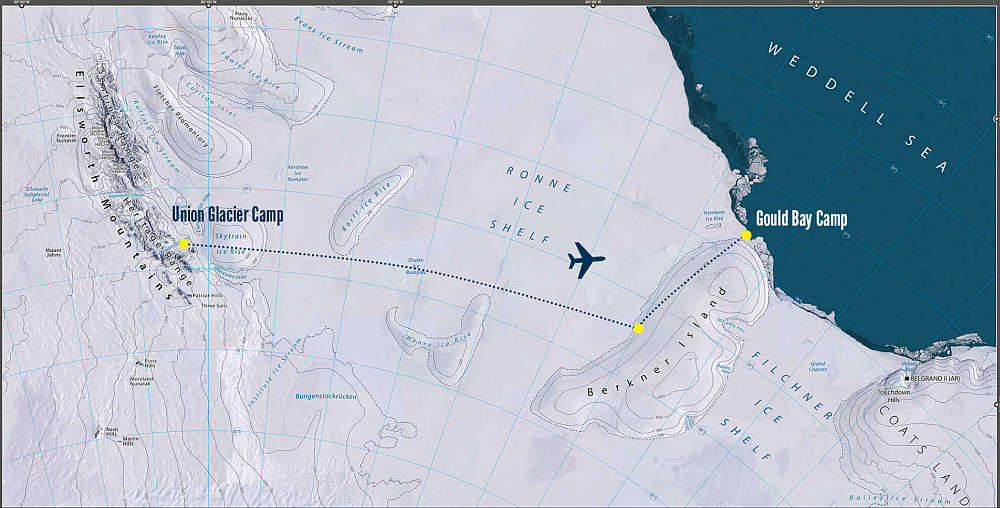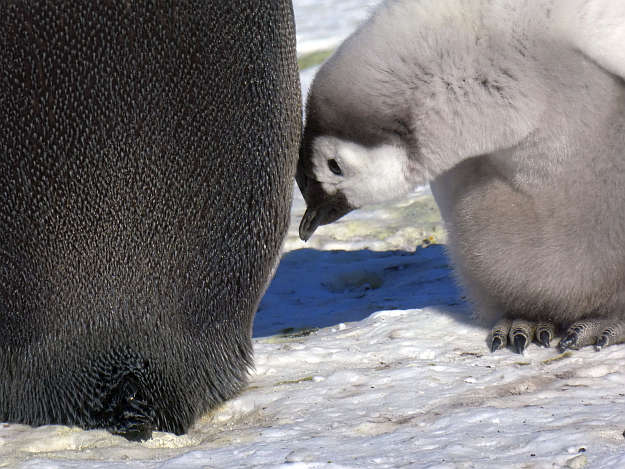As usual, I have BBC’s nature documentaries to blame for my ‘wilder’ vacations. They have led me to the rainforests of Madagascar, Serengeti plains of Tanzania, and Amazon jungles of Peru, Brazil, as well as Ecuador. With the increasingly catastrophic collapse of Antarctic ice shelves where emperor penguins live, feed, and breed, I decided it was time to seek an audience with the Emperors…
I started my research in January 2021 and found options to see the fabled emperor penguins are either brief fly-in visits or walk-up cruise excursions. However success is predicated on myriad factors, the main ones being the weather (in a land notorious for unpredictable storms), ability to find the Emperors, and condition of the sea ice. The only tour with 100% chance of success is to camp by an emperor penguin colony in front of the Ronne Ice Shelf in the frigid Weddell Sea.

Setting foot on Antarctica is truly a once in a life time experience due to the expense, time, and effort involved. Given the sole purpose of this exercise was to see the Emperors, I opted for the last option. The expedition is run by Antarctic Logistics & Expeditions (ALE). The temporary camp site changes with the penguin colony location every year. It operates from early November to mid-December and is completely dismantled at the end of season. As noted in ALE’s website ‘Weather at the Emperor rookery is highly variable and influenced by coastal systems. Temperatures range from -25°F (-32°C) to near 32°F (0°C) with sunny and overcast skies and the possibility of heavy snowstorms.’ Oh Joy!!!
Any illusion I was ahead of the game by planning for 2022 was shattered by the 45-person long waitlist when I tried to sign up. Miraculously we snagged the final spots on the last Penguin camp of the season – probably because most gave up after waiting for over a year without getting status updates. But it was May 2022 and there was much to do…
Never having lived in a snow zone, we had to get everything and fast. The exhaustive ‘Required Clothing & Equipment List’ ran 9 pages: 5 top layers, 4 bottom layers, 2 weights of socks, 2 kinds of footgear, 2 kinds of eye protection, 3 kinds of head coverings and 3 kinds of gloves. The biggest challenge was finding liner gloves, midweight insulated gloves and thick insulating expedition mittens that can potentially be ALL worn together. With all the clothes on, we’d look just like oversized penguins!
I spent the next 2 months frantically buying, trying, and returning winter gear, turning my living room into a warehouse. At least specialty items like polar insulation parka and pants, -100°F rated snow boots with removable liners (trust me you’d be miserable with anything less!) and -40°F rated sleeping bag in the list are rentable from ALE.
Given the remoteness and unforgiving nature of Antarctica, ALE requires medivac insurance of $300,000/pp. And since the expedition – which is the price of one’s first born – is essentially a cash transaction, coverage against operator default, trip cancellation etc. goes without saying.
Since Antarctic storms can last a couple weeks, ALE recommends that we book to return no earlier than 3 days after the end of tour, and on flexible plane tickets. I went with the recommended travel agency as it’s set up to coordinate with ALE in case of flight delays. I also added extra days to our room reservations to minimize chances of being ‘homeless’ if the hotels were full (which has been known to happen!).
Also every photography blog on Antarctic travel stressed redundancy on photo gear and peripherals, as the extreme cold and difference in humidity between interior and exterior environs can wreak havoc on the electronics. Sure enough, one of our 3 cameras quit on the first outing and my compact flash reader died unceremoniously.

Most flights for Antarctica leave from Punta Arenas, Chile where ALE is headquartered. We were required to arrive 2 days prior to the start of our 9-day tour to allow time for expedition briefing, gear check, rental fitting, and mandatory COVID tests. There were 8 of us heading to Penguin Camp – an international bunch from Canada, Switzerland, Luxembourg, Australia, and the US.

We’re scheduled is to split time between 2 camps: Union Glacier and Gould Bay (aka Penguin Camp). Intercontinental flights land at Union Glacier. It is a permanent base serviced by a full staff with heavy machinery and can host up to 70 visitors. We were supposed to be there for the bulk of our Antarctica trip. Gould Bay is a small seasonal camp by the emperor penguin colony with a maximum guest capacity of 10. Ideally, we would have 2-3 days at the colony. In reality, time at each is dictated by weather conditions, which are closely monitored by ALE’s meteorologists.

Boarding pass at last! We did everything to minimize chances of catching COVID as boarding passes were only issued after passing 2 consecutive days of tests. ALE owns a variety of planes. Antarctica passenger flights are via its Boeing 757s and operated by Iceland Air.
Our Antarctica-bound flight was scheduled for the following morning but was cancelled due to bad weather. Luckily we were cleared for departure a day later.

There were 20-30 passengers, so everyone had a window seat (or more) on the Boeing. After a 4-hour flight, we touched down at Union Glacier. The seemingly endless path of solid ice we landed on is apparently a natural occurrence that ALE put to good use. Since the surface is super slick, I’m glad the blue ice runway has plenty of room for the plane to come to a stop!

After a late buffet lunch and brief facility tour, we were told a storm was coming. Our group had to leave for Gould Bay by the evening or risk being stuck at Union Glacier for days.

We eventually left around 9 pm in ALE’s Basler BT-67. Antarctica only has two seasons: summer and winter. The sun never sets from late October to March. It was amazing to see light outside when we reached Penguin Camp after midnight. Even more cool, an Emperor had turned up to greet us!

The simple community tent was the camp’s hub where we a) gathered for meals, charging devices, briefings and group activities, b) huddled around the all-important stove to toast ourselves, and c) hung our soggy boot liners and clothes up to dry. It didn’t look like much but I had some of the best times hanging out there with everyone, including our wonderful flight crew, in this incredible Antarctic adventure.
One surprising fact is that while Antarctica is a continent of frozen water, it is actually a vast desert and the driest place on earth. To meet water needs at the camps, ice has to be melted by burning jet fuel, obviously an exceedingly expensive proposition. That’s why fresh water is reserved for drinking or cooking, and gray water is recycled as much as possible. Sadly, since Gould Bay is a field camp, it has no shower facilities. At least there’s a bottomless supply of Wet Wipes.
Hand warmers, another Antarctic expedition essential, are freely available at the Club House. I for one needed a hand warmer stuffed into each polar mitt just to defrost my frozen fingers in between taking pix – and I was wearing not 1, but 2 pairs of liner gloves…

The next day was sunny and beautiful. Theoretically, 3 guide-led trips were available daily IFF the weather co-operates. Since we were living on basically a thick slab of ice, crevasses could open up anytime. The guides had to do a safety check and mark the route every day before we could get out.
After a late breakfast, it was time to visit the Emperors! Like a bunch of excited school kids, we headed out single file, staying to one side of the flagged path, with a guide on each end. It was about 1.2 km (.75 mi) to the penguin colony and after a 20-minute trek, we were rewarded by this wonderful spectacle.

There were sleds available for us to haul our gear and kneel or lie on for photographing the emperor penguins.

Antarctic Treaty Visitor Site Guidelines bar people from encroaching on the emperor penguins or engaging with them in any way. However the birds are free to walk up to us and many did as they have no fear of humans.

Everyone scattered to find his (or her) piece of paradise, observing or photographing the Emperors to the heart’s content. I came across this lone penguin apparently having a Zen moment…

A surreal landscape that resembled frozen clouds stretched for miles from the penguin colony.

We reluctantly returned to camp for an early dinner but headed out for our 2nd trip as soon as possible. It’s usually a cacophony of sounds at the rookery as hatchlings constantly asked to be fed, and adults called to find their mates. The emperor penguin chicks use vocalization to locate their parents and then beg for food by bobbing their heads with their backs to the parents. This prompts the adults to regurgitate the food to feed the chicks.

It seemed to bode ill for the emperor penguin chick if it were small enough to stuff itself, albeit just barely, into its father’s brood pouch at this time of the season.

Everyone went wild taking pix of the super cute chicks. Caught this one peering near-sightedly at the ground next to an adult, but hard to tell what it was looking at from the distance.

Some penguin chicks were so well fed they looked like waddling rolly pollies! Caught this one napping after a good meal.

On our way back to camp, one of our guides showed us an unhatched emperor penguin egg as well as a broken one. The latter was a rare find, as it would be usually scarfed up by marauding scavengers.
Most of our group left for the 3rd outing after midnight. To me, the prospect of getting suited up in the bulky polar parka, pants, and boots, with neck gaiter, balaclava, ski goggles, beanie, PLUS remembering all 4 pairs of gloves and myriad camera gear was just as daunting as the 1.5 mi round trip trek. And heaven forbid if nature calls after one was suited up! So I decided to chill out – or more accurately, thaw out – at the Club House and spend some quality time with my gzillion penguin pix taken that day. Little did I know things were going to get a lot more exciting in the next 48 hours…


